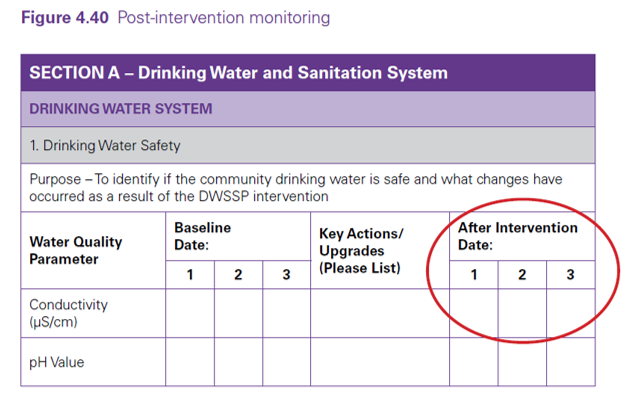PART 4 – WASH Resilience in communities
Pacific WASH Resilience GUIDELINES
A practical tool for all those involved in addressing the
resilience of water, sanitation and hygiene services in the Pacific
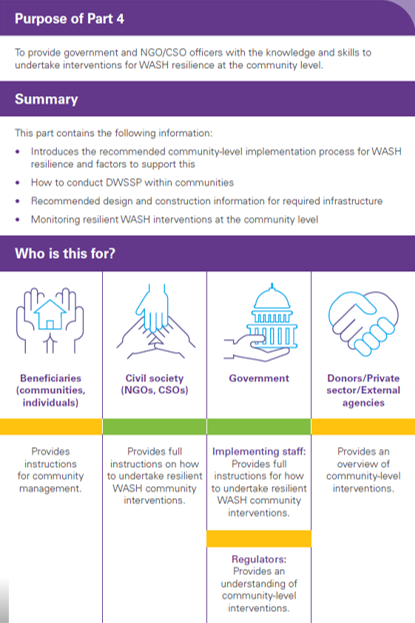
Community level process for WASH Resilience
What is this for?
To ensure beneficiaries receive sustainable water and sanitation services that can adapt to shocks and processes of change.
Who is this for?
Primarily for implementing agencies that conduct community based interventions.
Why?
It is the infrastructure and the capacity of communities to manage their system that delivers the needed health impacts in Pacific communities.
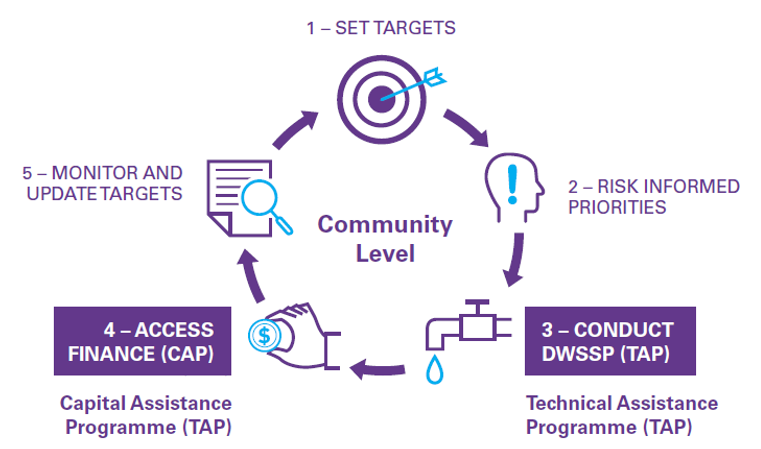
Community level process – Key steps for implementation
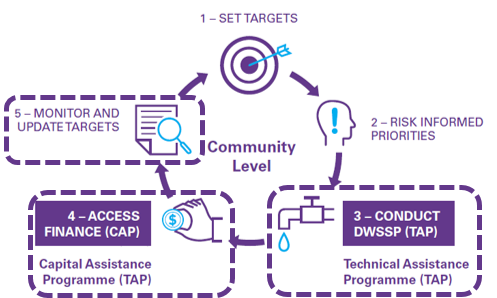
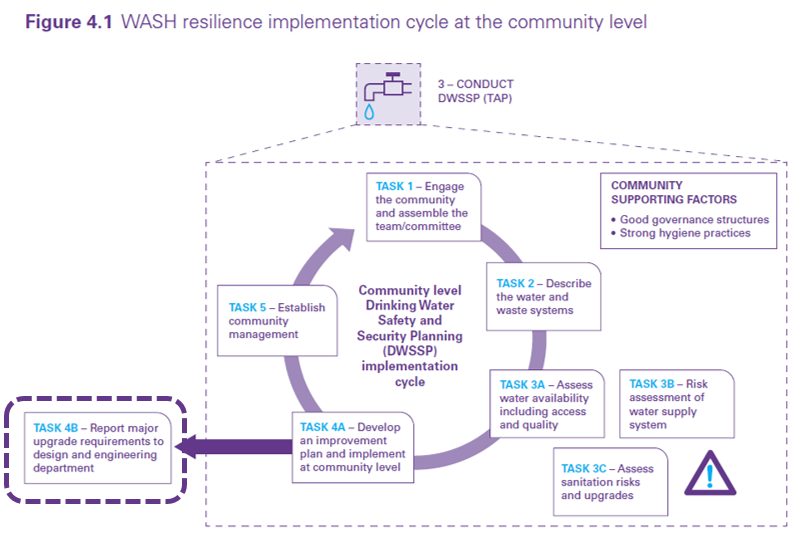
Conducting DWSSP
The DWSSP approach consists of five principal tasks:
- Task 1 – Engage the community and assemble a team/committee
- Task 2 – Describe the water and waste systems
- Task 3 – Conduct water and waste system assessments
- Task 4 – Develop an improvement plan and implement at the community level
- Task 5 – Establish community management
Major upgrades to the system
Upon completion of the training intervention, the community will now have developed a DWSSP that they can use to plan the required infrastructure upgrades to their system
Monitoring of the DWSSP intervention
After conducting improvements, monitor progress against set targets
Local factors supporting WASH resilience



Conduct DWSSP Training
Major upgrades to the system
Infrastructure design
Undertaken by external partners when infrastructure needs are beyond the needs of the community
Resilience in the design phase
The concept of resilience is broad and requires integration into national/sub-national systems, community capacity, and physical infrastructure. See guidelines for design factors influencing resilience
Access finance
If a CAP is available, obtain guidelines and submit an application
Construction
See guidelines for construction factors influencing resilience
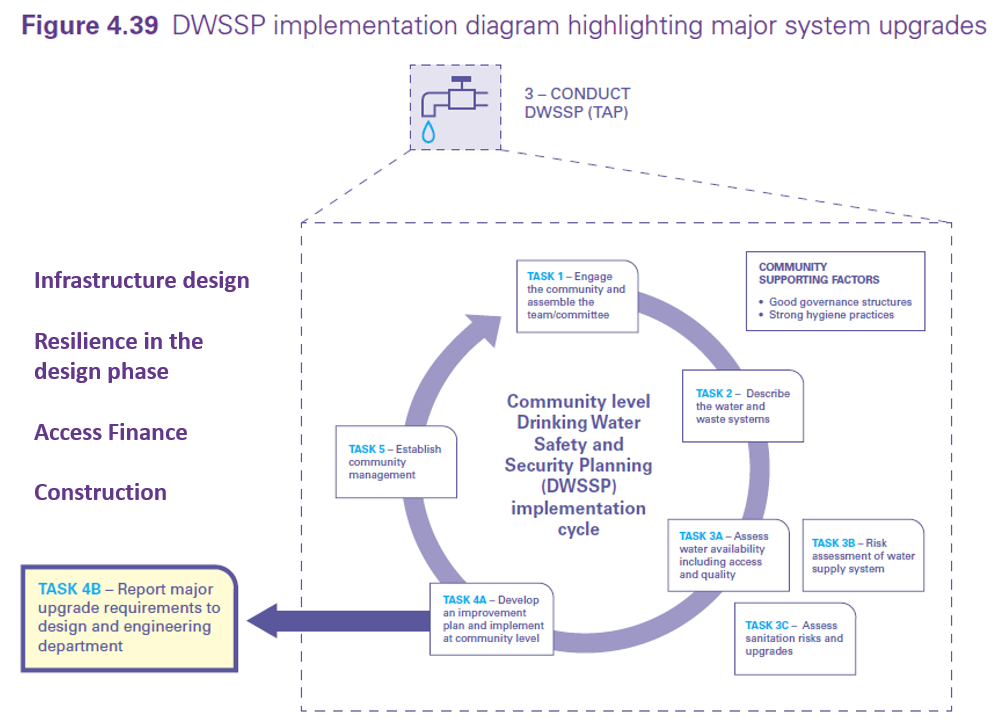
Monitoring DWSSP interventions
Conduct monitoring against initial baseline
Conduct a monitoring visit using the same baselining method and template that was developed during the pre-training visit
Update the stakeholders and programme
After completing the monitoring and appropriate reporting, it is important to update all stakeholders
